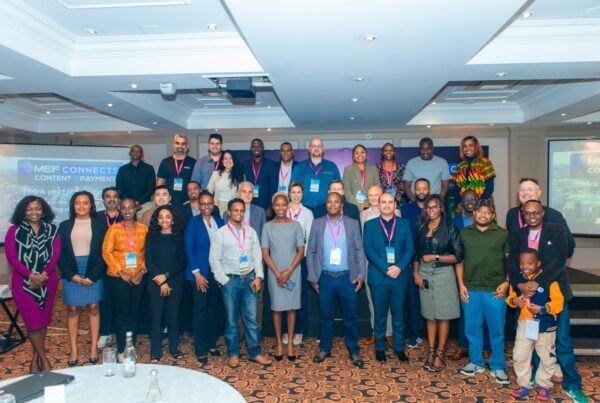COO of Digital Virgo, Eric Tiberghien, shares insights into the Pan-African Payment and Settlement System (PAPSS) and how it is revolutionising intra-African mobile payments.
The Pan-African Payment and Settlement System (PAPSS) is revolutionizing intra-African trade by eliminating reliance on foreign currencies and reducing transaction costs. Launched to support the African Continental Free Trade Area (AfCFTA), PAPSS enables real-time, cost-effective transactions in local currencies, fostering financial autonomy and accelerating economic integration.
Tackling Africa’s Payment Barriers

Cross-border payments have long been a major barrier to business growth and economic integration in Africa. The reliance on foreign currencies, such as the US dollar or euro, has led to high conversion fees and lengthy transaction processes. These inefficiencies have increased costs for businesses and limited regional expansion, particularly for SMEs, which are key to Africa’s economy.
PAPSS was launched in January 2022 to address these challenges. This initiative aims to create a single market for goods and services across 54 countries, promoting deeper economic integration and reducing trade barriers.
A New Era of Seamless Transactions
At the heart of PAPSS lies its multilateral net settlement framework, which reduces unnecessary currency exchanges. Instead of processing each transaction separately, it consolidates payments between countries and settles only the final balance.
For instance, if businesses in Country A export goods worth $10 million to Country B, while businesses in Country B export goods worth $8 million to Country A, PAPSS only settles the net balance of $2 million.
By enabling payments in local currencies, PAPSS addresses one of Africa’s major financial challenges: dependence on foreign currencies like the US dollar or euro. This dependency not only increases costs but also exposes African economies to exchange rate volatility.”
This innovation reduces the volume of funds crossing borders and optimizes liquidity for central banks. Additionally, PAPSS allows transactions in local currencies, eliminating costly foreign exchange conversions.
Simplifying Trade Across Africa
By enabling payments in local currencies, PAPSS addresses one of Africa’s major financial challenges: dependence on foreign currencies like the US dollar or euro. This dependency not only increases costs but also exposes African economies to exchange rate volatility.
PAPSS helps by reducing the need for foreign exchange, making trade more efficient and supporting monetary sovereignty.
PAPSS Grows, Bringing Africa Closer Together
PAPSS was first launched in the West African Monetary Zone (WAMZ), which includes Nigeria, Ghana, Gambia, Sierra Leone, Liberia, and Guinea. This region was strategically chosen for its active trade networks and integrated financial infrastructures. After a successful pilot phase, PAPSS was officially rolled out in January 2022 and expanded to other regions, with Djibouti, Zambia, Rwanda, and Zimbabwe among the early adopters outside WAMZ.
In September 2023, the Central Bank of Kenya (CBK) became the 10th African central bank to join PAPSS, strengthening its role in East Africa’s financial integration. Kenya’s leadership in digital finance further legitimized PAPSS as a key infrastructure for Africa’s digital economy.
In November 2024, the Central Bank of Egypt followed, making Cairo the PAPSS headquarters and positioning the country as a strategic link between Africa and the Middle East. Egypt’s inclusion is expected to enhance the system’s visibility and attract more countries and financial institutions to join.
Despite this progress, significant challenges remain, particularly in integrating the West and Central African regions, including UMOA and CEMAC. These regions already benefit from shared currencies—the West African CFA franc and the Central African CFA franc—and robust financial infrastructures. However, their inclusion in PAPSS requires harmonizing regulatory frameworks and aligning regional payment systems with PAPSS’s multilateral settlement framework.
Empowering SMEs and the Informal Economy
PAPSS has a transformative impact on small and medium-sized enterprises (SMEs), which often face high transaction costs and administrative burdens. By enabling affordable and efficient payments in local currencies, PAPSS levels the playing field for SMEs, making it easier for them to access regional markets and compete with larger enterprises.
PAPSS also promotes financial inclusion by enabling mobile money platforms to integrate with the system, offering cross-border payment solutions and extending financial services to underbanked populations.
Moreover, PAPSS supports Africa’s informal sector, which represents a large portion of the economy. By providing affordable payment options, it bridges the gap between the informal and formal economies, contributing to greater economic stability.
From Vision to Reality: Overcoming Key Hurdles
Despite its achievements, PAPSS faces several challenges that need to be addressed for long-term success:
Adoption: The adoption of PAPSS by banks and businesses is gradual. Some SME’s particularly lack awareness, and there is a need for banks to upgrade technology and retrain staff. To accelerate adoption, PAPSS and partners like Afreximbank have introduced workshops, incentives, and pilot programs to demonstrate its benefits. Early efforts in countries like Kenya and Egypt highlight the importance of education and collaboration to foster confidence and drive widespread usage.
Interoperability: Integrating PAPSS with existing national payment systems requires substantial technological and financial investments. Each country has its own payment infrastructure, regulatory frameworks, and operational standards, which must align with PAPSS’s multilateral settlement model. For example, some national systems may not yet support real-time payments or currency conversion, necessitating significant upgrades to ensure compatibility.
This process also involves coordination between central banks and commercial banks, as well as adapting legacy systems to integrate seamlessly with PAPSS. In countries where digital payment systems are less developed, additional investment in infrastructure, such as secure data centers and reliable internet connectivity, is required.
Regulatory Alignment: Harmonizing financial regulations across Africa is critical for smooth operation. Differences in banking, taxation, anti-money laundering (AML), and currency controls can cause delays or rejections of transactions.
To address these challenges, PAPSS collaborates with central banks, regional economic communities (e.g., ECOWAS and SADC), and organizations like the African Union to establish standardized guidelines. These efforts aim to create a unified regulatory framework that balances national priorities with the need for efficient cross-border payments.
A Step Toward Africa’s Financial Sovereignty
The Pan-African Payment and Settlement System represents a transformative step toward a more integrated and efficient financial ecosystem in Africa. By reducing dependency on foreign currencies, lowering transaction costs, and simplifying cross-border trade, PAPSS has the potential to unlock unprecedented economic opportunities across the continent.
While challenges remain, its ongoing expansion is a promising sign. As more countries and businesses embrace PAPSS, it will undoubtedly serve as a cornerstone for Africa’s economic sovereignty and sustainable growth in the years to come





